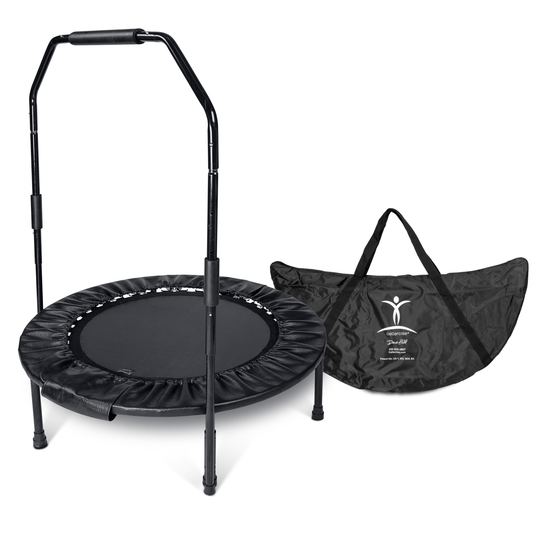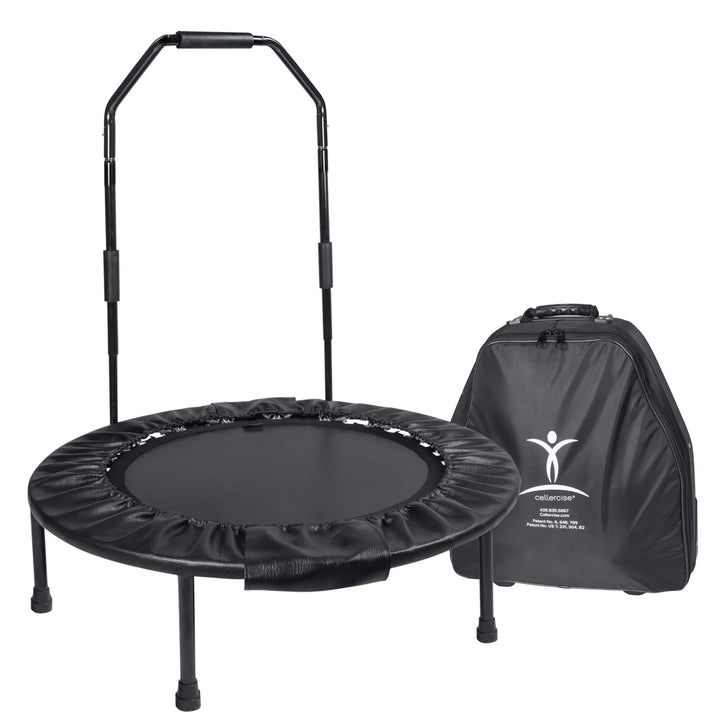Disclaimer: This Blog/Web Site is made available by the publisher for educational purposes only as well as to give general information & understanding regarding the industry. It is not to be used as specific medical advice or to replace consulting with your doctor. You should always consult with your doctor. By using this Blog / Web Site you understand that this Blog/Web Site should not be used as a substitute for medical advice from a licensed professional. For our full disclaimer, please read: Cellercise® Disclaimer
Do you love to exercise, or is it something you dread? Some people rave about going to the gym, but others think a runner’s high is really oxygen deprivation combined with low blood sugar. Often, they have misconceptions about what healthy physical activity really means. While it’s always good to challenge yourself during physical activity, exercises like rebounding can improve cardiovascular health and burn calories while you feel like you’re having fun.
Myth 1 – It Must Hurt
Many people think exercise must be painful to be effective. They commit to an exercise routine to improve their health or lose weight and embrace it with the enthusiasm of someone going for a root canal. They lift as much weight as their body can stand or run until they’re exhausted, and the next day sore muscles make them extremely uncomfortable. They hate the workout, and they suffer the day after it. No wonder they find it difficult to stick to their routines. The saying “No pain, no gain,” doesn’t have to apply to working out. If you remember jumping on a trampoline as a child, think back to the exhilaration you felt. You felt temporary weightlessness with every bounce, almost as if you could fly. Every landing was comfortable and cushioned, and the trampoline seemed to be doing much of the work. When your body tired, you rested a minute, but often you couldn’t wait to get back to bouncing. Berkley Wellness published an article that included a study of adults who completed 19-minute sessions on an exercise trampoline. Most participants perceived the workout to be easier than it was because of the reduced impact and how much fun they were having.
Myth 2 – Healthy Means Thin
One misconception is that if you have a few extra pounds around your middle, you are unhealthy, while if you are skinny, you must be fit. However, some people can appear thin when they have very little muscle mass. These people can still be metabolically obese, putting them at risk for diabetes and high blood pressure. A European study found people who were metabolically healthy were less likely to develop heart disease or cancer, even if they carried excess weight. Physical fitness is more important than the number on a scale. People who had normal levels of cardiovascular fitness didn’t experience insulin resistance, pre-diabetes, falling good cholesterol or high blood pressure. People who were fit had a 38 percent lower risk of death from health-related causes, even if they were overweight. Some people who are heavy are healthier than their peers with a smaller waist size. People often start an exercise program to lose weight. However, the pounds they’re eager to lose stress their joints, making it difficult to complete workouts. A mini trampoline workout solves this problem by reducing stress and helping quickly shed excess weight.
Myth 3 – Strength Training Makes You Bulky
Men go to the gym to develop bulging biceps and huge shoulders. Women avoid strength training because they’re afraid it will make them appear too muscular. It’s possible to incorporate strength training without having muscles that pop out like Popeye’s after a can of spinach. Here are some of the reasons strength training is so important:
- Improved muscle mass increases your metabolism. Strong muscles burn calories, even at rest.
- Strength training improves flexibility, balance, and posture.
- Building muscle releases endorphins and can reduce depression and help you sleep better.
- Strength training improves bone density so you’re less likely to experience osteoporosis.
Instead of completing endless bicep curls and leg presses, try strength training on a mini trampoline. Bouncing works your calves, thighs, core, and upper body with gentle repetitions.
Myth 4 – Only Long Workouts Help
People put off exercising because they must devote an hour or more to every session. The truth is, all exercise counts. One reason a trampoline workout is so effective is that it uses your whole body at once intense training. It challenges the respiratory system to deliver oxygen all over the body while stimulating muscles, so you keep burning calories even after the workout is over. Most people start rebounding with just a few minutes at a time, increasing duration and intensity as they feel comfortable. One approach involves 20 seconds of jumping followed by 10 seconds of rest, repeated eight times for a total of four minutes. Repeat a few times throughout the day for incredible health benefits. A mini trampoline workout reduces stress on joints and works every muscle to make exercise enjoyable. The Dave Hall Cellerciser® is the mini trampoline celebrities and fitness enthusiasts prefer. News agencies CBS, ABC, and ESPN have all done stories on the effectiveness of rebounding for weight loss, stress reduction, and improved health. Shop for your Cellercise® Rebounder online today.
NOTE: Remember to always consult with your doctor or health professional before starting new exercise routines.
Get Your Cellerciser® and start rebounding today!













